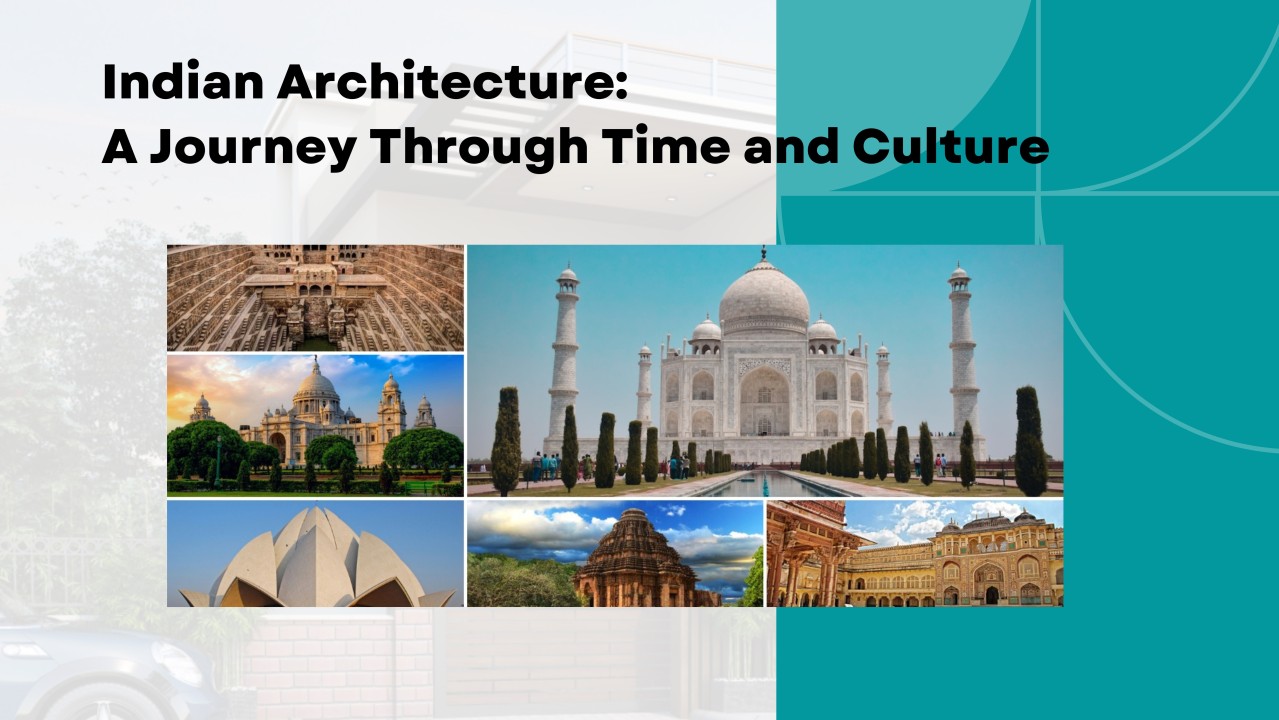
Indian Architecture: A Journey Through Time and Culture
India is a land of rich heritage and diverse cultural influences, reflected prominently in its architecture. From ancient civilizations to the modern era, Indian architecture showcases an exquisite blend of traditional craftsmanship and innovative design. Let us embark on a journey through time to explore the magnificence of Indian architecture and delve into the scope it offers in the contemporary context.
Ancient Marvels: Temples and Forts
The roots of Indian architecture can be traced back to the ancient civilizations of the Indus Valley and Vedic period. The temple architecture of India is a remarkable testament to the artistry and devotion of its people. Elaborate stone carvings, intricate sculptures, and towering spires adorn temples across the country. From the Dravidian-style temples of South India to the iconic architecture of Khajuraho in Madhya Pradesh, each region has its distinct architectural identity.
Indian forts are another marvel of ancient architecture, combining strategic design with aesthetic beauty. Forts like the Red Fort in Delhi, Chittorgarh Fort in Rajasthan, and Golconda Fort in Hyderabad are living testaments to the grandeur of India's historical past.
Medieval Era: Palaces and Tombs
The medieval era witnessed the rise of opulent palaces and magnificent tombs, showcasing the architectural prowess of various dynasties. The Mughal architecture, with its grand domes, elegant arches, and intricately designed gardens, left an indelible mark on India's architectural landscape. The Taj Mahal, a UNESCO World Heritage site, stands as an iconic symbol of love and architectural brilliance.
Colonial Influence and Indo-Saracenic Architecture
The colonial period brought a fusion of European and Indian architectural styles, known as Indo-Saracenic architecture. The blend of Gothic, Victorian, and Islamic elements is evident in buildings like the Victoria Memorial in Kolkata and the Gateway of India in Mumbai. This style showcased the adaptability of Indian architects in embracing diverse influences.
Contemporary Architecture in India
In recent years, Indian architecture has experienced a renaissance, embracing modern technologies, sustainability, and functional design. Rapid urbanization and the need for efficient and eco-friendly structures have given rise to contemporary architectural masterpieces.
Scope of Architecture in India
The scope of architecture in India is vast and promising, with numerous opportunities and challenges:
- Sustainable and Green Architecture: India's growing concern for environmental conservation has opened up avenues for sustainable and green architecture. Architects are incorporating eco-friendly materials, rainwater harvesting, solar energy, and green building certifications to create environmentally responsible structures.
- Urban Planning and Smart Cities: With the rapid urbanization of cities, there is a demand for smart city planning and innovative urban design. Architects play a crucial role in creating sustainable urban spaces that promote connectivity, walkability, and resource optimization.
- Preservation of Heritage: India's architectural heritage is a treasure trove of history and culture. Architects are entrusted with the task of conserving and restoring historical structures while ensuring they remain relevant and functional.
- Innovative Infrastructure: India's infrastructure development is on the rise, providing architects with opportunities to design innovative structures such as bridges, airports, and metro systems.
- Affordable Housing: The need for affordable and sustainable housing solutions is pressing in India. Architects are exploring cost-effective and efficient building techniques to address the housing needs of the growing population.
Conclusion
Indian architecture is an evolving narrative, blending tradition and innovation to shape the future of the nation. With a diverse cultural canvas and a growing emphasis on sustainability and design excellence, the scope of architecture in India is boundless. As architects, we hold the power to create spaces that not only reflect our cultural heritage but also foster a more sustainable and inclusive tomorrow. Let us continue to push the boundaries of creativity and usher in an era of transformative architecture in India.